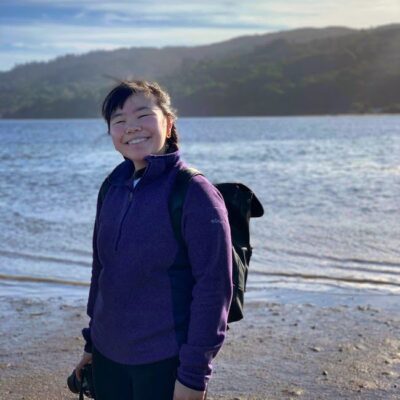Danielle Yang SURF SMART
Adaptive Radiations in Turtle Skulls
This research seeks to understand the morphological relationship between the bony and keratinous portions of the turtle feeding apparatus, as well as their relationship to diet and habitat. I will focus on a subset of these turtles to test hypotheses at a finer taxonomic level with the goal of exploring the morphological variation within this taxon. To identify variation in skull shape, I will select appropriate specimens from institutions across the Bay Area, such as the UC Museums of Paleontology and Vertebrate Zoology and the California Academy of Sciences, and learn to collect scientifically useful photographs and detailed notes for use in later analyses. Additionally, some of these specimens will be brought to the Berkeley Preclinical Imaging Facility for computed tomography (CT) scanning. With the observational data collected from photographs and CT scans, I will use visualization software to digitize and analyze turtle specimens.
Message To Sponsor
This summer was an amazing experience, and I truly thank the SURF donors, SURF staff, and my mentor, Peter Kloess, for the hard work, time, and effort you invested in my personal (and scholarly) growth. I have known for quite a while that I would like to pursue a graduate degree of some sort; however, I was unsure if I would enjoy research itself, especially when the project was more self-driven and based on my own questions about the world and its organisms. Given that this was the most amount of time that I have been able to dedicate to one of my own research projects, I was able to look beyond just my initial curiosity to ask more nuanced questions about the interactions between turtle morphology, ecology, range, diet, genetics, etc. more so than ever before. Whereas my previous research projects involving similar subject matter might have resulted in preliminary understandings of sexual dimorphism or resource partitioning in one turtle species, focusing full time on my research beyond these basic results allowed me to explore topics like interspecies differences, phylogenetic relationships, ontogeny, musculature and bite force, geography, museum science, ethics, and so much more. Furthermore, I was able to strengthen my skills in programs such as 3D Slicer, and, with the help of my mentor, gain a fundamental understanding of methods of data interpretation, better my scientific writing skills, and learn how to think as a researcher when it came to looking to the next step of research and scientific inquiry. I plan to continue this relationship with my incredible mentor throughout the fall semester as we delve deeper into some of the data from this summer, and can't wait to dive deeper into approaching my morphological questions with a more interdisciplinary approach. Thank you all so much for your contributions to my growth as a student, researcher, and - I guess I can now officially call myself this - scientist, and I can't wait for all of you to see the results of my work this year!